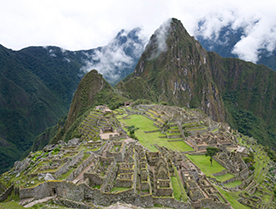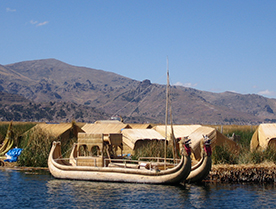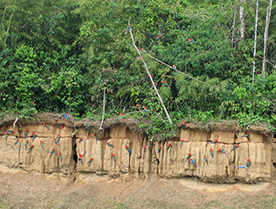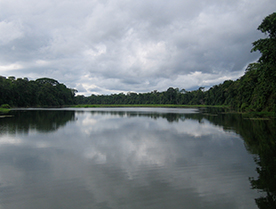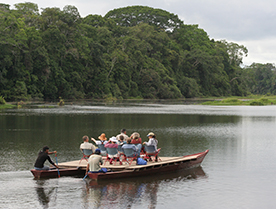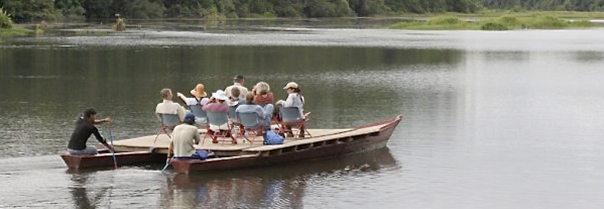
What's
New
- Winners Gallery
- Katrina's Editorials
- Health and Fitness
- Special Offers
- Field Experts
-
Travelogs
-
July 2012
Aspen Summer -
February 2012
Ladies' Trip to India -
September 2011
Grazing Our Way through the “New Tuscany” -
Summer 2011
Biarritz, San Sebastian & more -
June 2011
Vietnam: Traditions and Transformations -
April 2011
Peru Spring Break -
April 2011
Ski & Sea Spring Break -
December 2010
Miami Art Basel -
September 2010
The East Side of Eden -
September 2010
Buenos Aires, Sao Paulo and Rio -
August 2010
Ionian Bliss -
August 2010
Buzz-worthy Berlin -
July 2010
Alaska Adventure -
April 2010
Springtime in New York -
February 2010
Aspen: Winter Wonderland -
January 2010
Australia: Home for the Holidays -
November 2009
New York: Dining, Theater & Art -
October 2009
London Art & Dining -
September 2009
Japan Journey -
June 2009
Peru Adventure
-
July 2012
- Newsletters
- Press
- MLS Signature Trip: Arctic Adventure
Travelogs
Peru Adventure
Walking through the jungle in Manu National Park, I could almost hear the Giant Otters calling to me. This was my second trip to Peru – on my first visit, rain foiled my only chance to see these animals. Now, we were heading for an oxbow lake, where a family of otters is frequently seen. I could hardly wait.
But something else was calling first. High in the trees, we heard a sound like distant jet engines – Howler Monkeys roaring. Our wilderness guide, Renzo, stopped and held up his hand. We all froze, looking up. There was a crashing of branches, and suddenly, we were surrounded by Squirrel Monkeys, dozens of them, leaping and scampering from tree to tree. About a foot long (plus tail), tan with black muzzles, they are cute as can be, the acrobats of the rainforest. Far above us were the Howlers. It took me a while to spot them – when I did, I was startled by their size. Powerfully built, with tawny red fur and manelike beards, they reminded me of lions. Renzo told us that these monkeys live at the lake, and are part of a mixed troop that always travels together.
Our monkey encounter was the highlight of a day filled with amazing experiences. That morning, we rose before dawn so we could reach the macaw lick by sunrise. We sat quietly in a large blind, watching a cliff above the river where parrots and macaws flock each morning to eat the mineral-rich clay. The parrots began to arrive shortly after we did, and soon there were 30 or so Blue-Headed, Orange-Cheeked and Mealy parrots clinging to the cliff. Some time later, the first Red-and-Green Macaws gathered in the treetops. The parrots, following a strict protocol, dispersed, leaving the clay for the larger birds. The macaws were skittish, though – they would drop from branch to branch, getting lower and lower, but before they reached the cliff face, something would spook them and they’d fly off, squawking. Finally, they decided all was well, and one after another they moved onto the cliff, until there were more than a hundred, bedecking the wall like jewels.
After the macaws and the monkeys, it didn’t seem like the day could get any better. We continued to the oxbow lake and climbed onto our boat. Two oarsmen paddled us across the glassy water as we sat and watched nature unfold. Manu is one of the most biodiverse places on the planet, and during our excursion, we saw a least 12 different species of birds – Horned Screamers, Hoatzins with their Vegas-showgirl headdresses, and Jacanas (called “Jesus birds” because they appear to walk on water), to name a few. As we reached the middle of the lake, we saw three dark heads bobbing – Giant River Otters! They swam past us, big and sleek, nearly six feet long, with large, blunt faces and thick tails. One had caught a fish and was swimming on his back, gnawing on it. These aren’t the cuddly sea otters of California’s Monterey Bay – they’re strong, cunning predators, but with a sense of playfulness and mischief.
All told, we spent 13 days in Peru. Our tour was designed to explore the country’s remarkable biodiversity, and it more than delivered. Peru has an amazing variety of terrain – miles of coast, rugged peaks, lush jungles and cloud forests, arid plateaus – and we experienced it all. Unforgettable images stacked up like firewood: the Cock-of-the-Rock, Peru’s national bird, performing a mating dance; the floating Uros village on Lake Titicaca (where the boats, houses and even the islands themselves are made of reeds); and of course, the famous Lost City of the Incas, Machu Picchu. But the memory that stands out most vividly is our incredible day in the jungles of Manu.
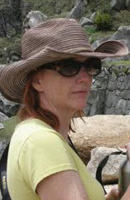
Here's to the wild places,
Ellen Hall
About Ellen Hall:
Ellen Hall is a writer by profession and an avid world traveler by inclination. Her first trip abroad was just after college, when she spent six weeks backpacking through Europe with her best friend. Since then, she travels whenever she gets the opportunity. Her trips usually focus on nature and history, and have included several return visits to Europe as well as Vietnam, Cambodia, Honduras, Peru, Japan, Costa Rica and Guyana. Some of her most memorable travel experiences include hiking the Inca trail, scuba diving with sharks in Honduras, volunteering at a vulture rescue center in Croatia, and paragliding in Slovenia.
Copyright 2013 MyLittleSwans, LLC. All rights reserved. My Little Swans, the logo and Share a world of experience are registered Trademarks of MyLittleSwans, LLC. Use of this site constitutes acceptance of our Terms of Use and Privacy Policy.

